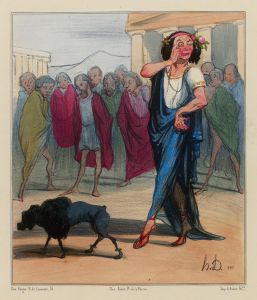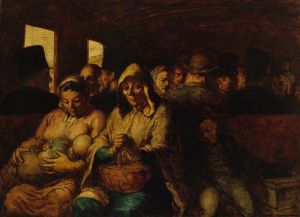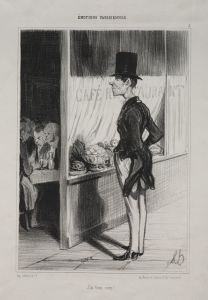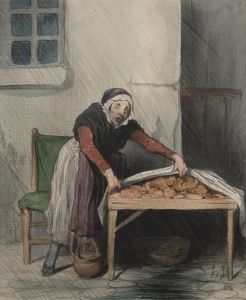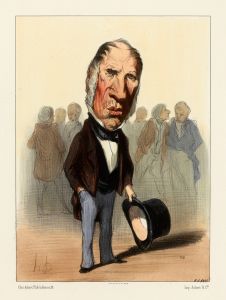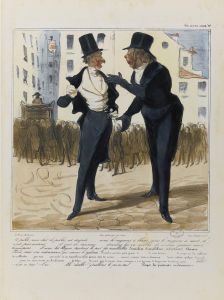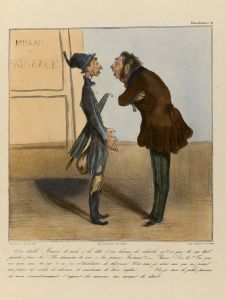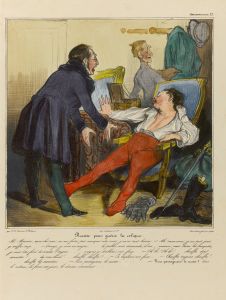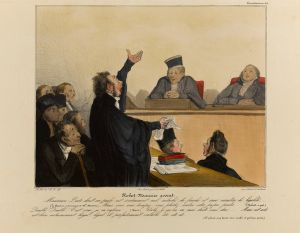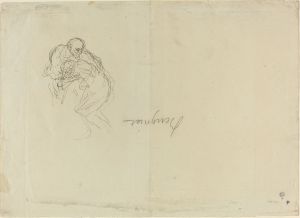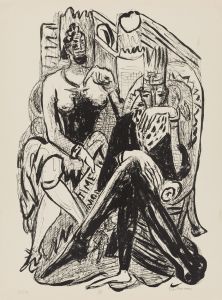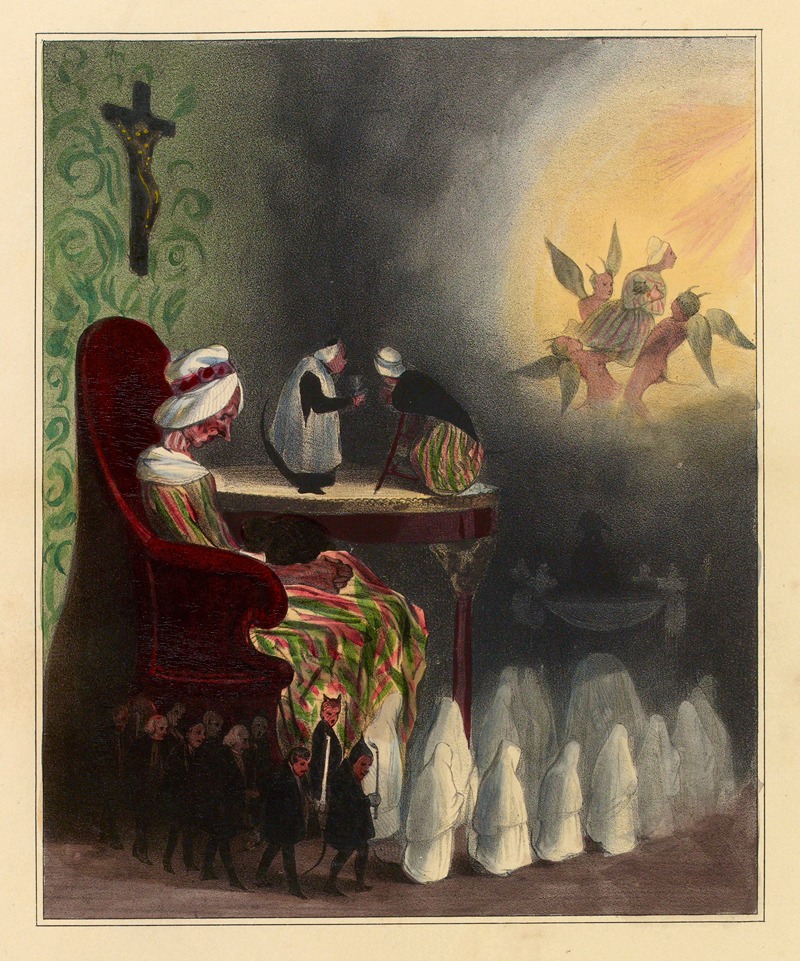
La mère Bridon va-t’en enfer
A hand-painted replica of Honoré Daumier’s masterpiece La mère Bridon va-t’en enfer, meticulously crafted by professional artists to capture the true essence of the original. Each piece is created with museum-quality canvas and rare mineral pigments, carefully painted by experienced artists with delicate brushstrokes and rich, layered colors to perfectly recreate the texture of the original artwork. Unlike machine-printed reproductions, this hand-painted version brings the painting to life, infused with the artist’s emotions and skill in every stroke. Whether for personal collection or home decoration, it instantly elevates the artistic atmosphere of any space.
"La mère Bridon va-t’en enfer" is a lithograph created by the French artist Honoré Daumier. Daumier, born on February 26, 1808, in Marseille, France, is renowned for his prolific work as a printmaker, caricaturist, painter, and sculptor. His works often provided sharp social commentary on the political and social issues of his time.
The lithograph "La mère Bridon va-t’en enfer" translates to "Mother Bridon, Go to Hell" in English. It is part of Daumier's extensive body of work that satirizes and critiques the society and politics of 19th-century France. Daumier's lithographs were frequently published in newspapers and journals, where they reached a broad audience and influenced public opinion.
Daumier's career as a lithographer began in the 1820s, and he quickly gained recognition for his ability to capture the essence of his subjects with a few deft strokes. His work often targeted the bourgeoisie, politicians, and the legal system, exposing their follies and hypocrisies. Daumier's keen eye for detail and his ability to convey complex emotions through his characters made his lithographs powerful tools of social critique.
"La mère Bridon va-t’en enfer" is one of many works where Daumier employs his characteristic style of exaggerated features and expressive faces to convey a strong message. The lithograph depicts an elderly woman, presumably Mother Bridon, with a stern and resolute expression. The title suggests a strong admonishment, possibly reflecting Daumier's critical view of certain societal behaviors or attitudes.
Daumier's lithographs were often published in satirical journals such as "La Caricature" and "Le Charivari," where they accompanied articles that critiqued contemporary events and figures. His work was not without controversy; Daumier was imprisoned for six months in 1832 for his caricature of King Louis-Philippe as Gargantua, a giant consuming the wealth of the nation.
Despite the challenges he faced, Daumier continued to produce a vast array of lithographs, paintings, and sculptures throughout his career. His work remains significant for its artistic merit and its incisive commentary on 19th-century French society. Daumier's ability to blend humor with serious critique has earned him a lasting place in the history of art.
"La mère Bridon va-t’en enfer" exemplifies Daumier's skill in using art as a means of social and political commentary. Through his lithographs, Daumier provided a voice for the common people and challenged the status quo, making him a pivotal figure in the world of caricature and satire.
In summary, "La mère Bridon va-t’en enfer" is a lithograph by Honoré Daumier that showcases his talent for social critique through art. Daumier's work continues to be celebrated for its artistic excellence and its impact on the society of his time.





